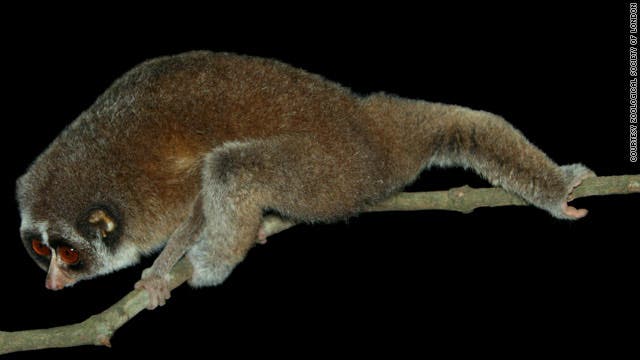
Wildlife researchers from Sri Lanka have reported photographing one of the world’s most reclusive animals, the Horton Plains slender loris, an animal thought to be extinct for more than 60 years (1939 to 2002). Slender loris populations are native to the rainforests of Sri Lanka and southern India have been in decline for decades, but unfortunately, this process sped up in the last years, mostly due to destruction of habitat for agriculture and logging.
This crowned a year and a half study conducted by researchers from the Zoological Society of London’s Edge project – a laudable initiative with the goal of raising awareness about the animals on the brink of extinction. They were helped by scientists from the University of Colombo and the Open University of Sri Lanka.
“This discovery is a great reward for the ongoing field research we undertake across much of south-western Sri Lanka,” said Research leader Saman Gamage
The pictures taken show a 20-centimeter long male adult sitting on a branch, and it also showed some physiological differences that somehwat surprised researchers. For example, he has shorter and sturdier limbs, possibly as an adaptation to the cooler climate or different type of forest it lives in.
“We are thrilled to have captured the first ever photographs and prove its continued existence — especially after its 65 year disappearing act,” said ZSL Conservation biologist Dr. Craig Turner. The discovery improves our knowledge of this species, but we need to focus our efforts on the conservation and restoration of the remaining montane forest where this species still exists. Currently this accounts for less than one percent of the land area of Sri Lanka.”
Update: At the end of 2012, a new slow loris species was discovered remarkably by biologists in Borneo and the Philippines. The new species of slow loris, named Nycticebus kayan, like most elusive nocturnal critters, has gone unnoticed because of its lifestyle. Unfortunately, it too is considered endangered, despite being barely discovered.
Was this helpful?



